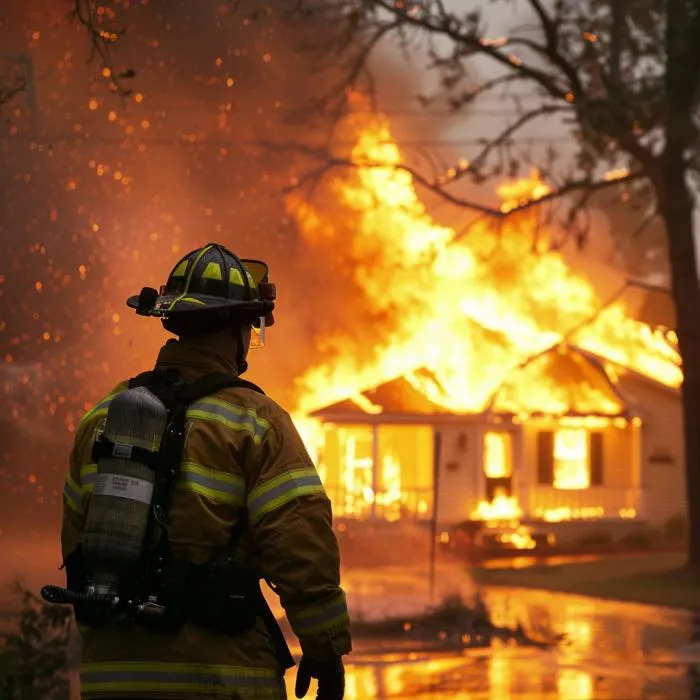
Emergency Preparedness: Ensuring Reliable Communication During Disasters with DAS
In times of crisis, reliable communication is crucial for coordinating emergency responses and ensuring the safety of building occupants. Distributed Antenna Systems (DAS) play a vital role in maintaining robust communication channels during disasters, enabling first responders and emergency personnel to perform their duties effectively. At DAS University, we emphasize the importance of integrating DAS into emergency preparedness plans. This blog post explores how DAS ensures reliable communication during disasters, the challenges it addresses, and best practices for implementation.
The Importance of Reliable Communication in Disasters
Effective communication is the backbone of emergency response operations. During disasters, whether natural or man-made, first responders rely on seamless communication to coordinate rescue efforts, provide medical assistance, and manage evacuation procedures. Reliable communication helps mitigate the impact of disasters, save lives, and reduce property damage.
Challenges in Emergency Communication
Signal Obstruction: Building materials such as concrete, steel, and low-emissivity glass can block or weaken wireless signals, creating dead zones and reducing communication reliability.
Network Congestion: During emergencies, the surge in communication traffic can overwhelm networks, leading to dropped calls and slow data transmission.
Power Outages: Disasters often cause power outages, which can disrupt communication systems and render them inoperable.
Environmental Factors: Adverse conditions such as smoke, water, and debris can interfere with wireless signals and hamper communication efforts.
How DAS Enhances Emergency Preparedness
Ensuring Signal Coverage
Comprehensive Coverage: DAS extends wireless coverage to all areas of a building, including basements, stairwells, and other traditionally challenging zones. This ensures that first responders have reliable communication throughout the structure.
Eliminating Dead Zones: By strategically placing antennas, DAS eliminates dead zones and ensures consistent signal strength, critical for effective communication during emergencies.
Supporting Public Safety Networks
Public Safety Frequencies: DAS can be configured to support specific frequencies used by public safety agencies, ensuring compatibility with emergency responder communication systems.
Bidirectional Communication: DAS amplifies both incoming and outgoing signals, facilitating clear and reliable two-way communication for first responders.
Maintaining Connectivity During Power Outages
Backup Power Solutions: DAS can be equipped with backup power sources such as batteries or generators, ensuring continuous operation during power outages.
Resilient Infrastructure: Designing DAS with redundancy and failover mechanisms helps maintain communication capabilities even when parts of the system are compromised.
Reducing Network Congestion
Dedicated Channels: DAS can allocate dedicated channels for emergency communications, reducing the likelihood of network congestion during high-traffic situations.
Priority Access: Implementing priority access protocols ensures that emergency responders have uninterrupted communication, even when network demand is high.
Best Practices for Implementing DAS for Emergency Preparedness
Conduct a Thorough Site Survey
Assessment: Perform a detailed site survey to identify areas with weak signal coverage, potential interference sources, and critical communication needs.
Customization: Use the survey data to design a customized DAS solution that addresses the specific requirements of the building and its occupants.
Engage with Local Authorities
Collaboration: Work closely with local fire departments, police, and other emergency services to understand their communication needs and ensure the DAS meets all public safety standards.
Compliance: Ensure the DAS complies with local building codes, fire codes, and public safety communication regulations.
Integrate with Building Systems
Smart Building Integration: Integrate DAS with other building systems, such as fire alarms and mass notification systems, to enhance overall emergency preparedness and response capabilities.
Real-Time Monitoring: Implement real-time monitoring tools to continuously track the performance of the DAS and detect any issues promptly.
Plan for Redundancy and Resilience
Redundant Pathways: Design the DAS with redundant pathways to ensure that if one part of the system fails, communication can continue through alternate routes.
Regular Testing and Maintenance: Schedule regular testing and maintenance to ensure the DAS remains operational and effective. Conduct emergency drills to test the system's performance under simulated disaster conditions.
Educate Building Occupants
Awareness Programs: Educate building occupants about the importance of DAS and how it supports emergency communication. Provide training on how to use communication devices effectively during emergencies.
Emergency Protocols: Develop and distribute clear emergency communication protocols to ensure that everyone knows how to respond and communicate during a disaster.
Real-World Applications of DAS in Emergency Preparedness
Hospitals and Healthcare Facilities
Critical Communication: In healthcare settings, reliable communication is essential for coordinating patient care and emergency responses. DAS ensures that medical personnel can communicate effectively throughout the facility.
Commercial and Residential High-Rises
Fire Safety: High-rise buildings pose unique challenges for emergency communication. DAS provides reliable coverage from the ground floor to the top, enabling firefighters and other responders to maintain communication during emergencies.
Educational Institutions
Campus Safety: Schools and universities benefit from DAS by ensuring that security personnel can communicate effectively across campus, enhancing safety and emergency response capabilities.
Transportation Hubs
Continuous Communication: Airports, train stations, and other transportation hubs require robust communication systems to manage emergencies and coordinate responses. DAS ensures reliable communication in these expansive areas.
Conclusion
Distributed Antenna Systems (DAS) are essential components of emergency preparedness, ensuring reliable communication during disasters. By providing comprehensive coverage, supporting public safety networks, maintaining connectivity during power outages, and reducing network congestion, DAS enhances the ability of first responders to coordinate and perform their duties effectively. At DAS University, we are dedicated to educating professionals on the critical role of DAS in emergency preparedness and equipping them with the knowledge to implement and maintain these systems. Join us to learn more about enhancing safety through advanced communication solutions and become a leader in emergency preparedness.



